Looks good.
Brew on
Brew on



Great, thanks for all the help.Looks good.
Brew on
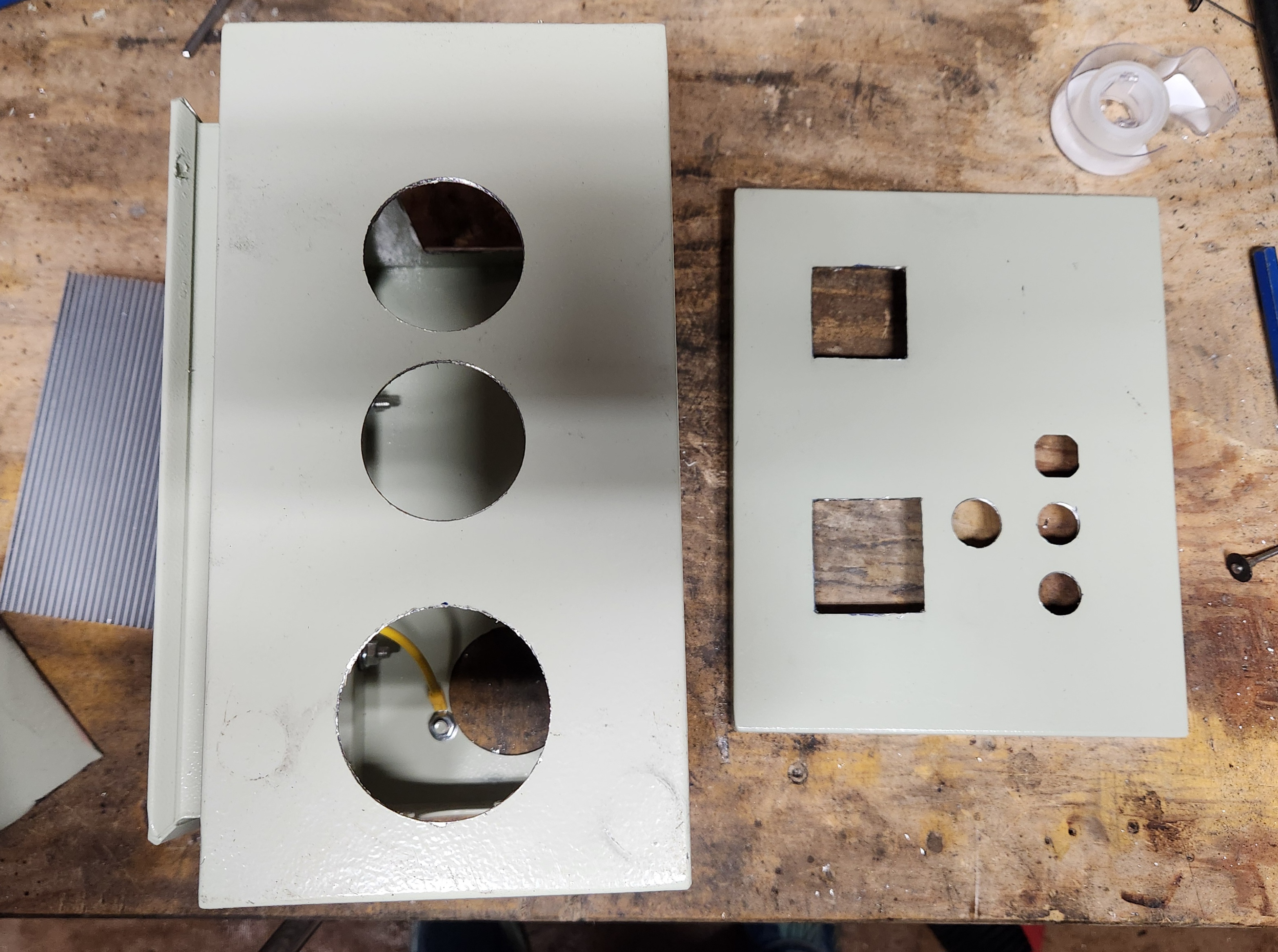
Having also built my control system in very much the same size box I recommend you give thought to connecting your heavy power cables to the bottom of your box. 1st, doing so will preclude most of the lateral weight the socket will endure. This will lengthen the life of your socket. 2nd, any fluid that splashes on cables connected to the bottom of your control box will flow away from the socket.












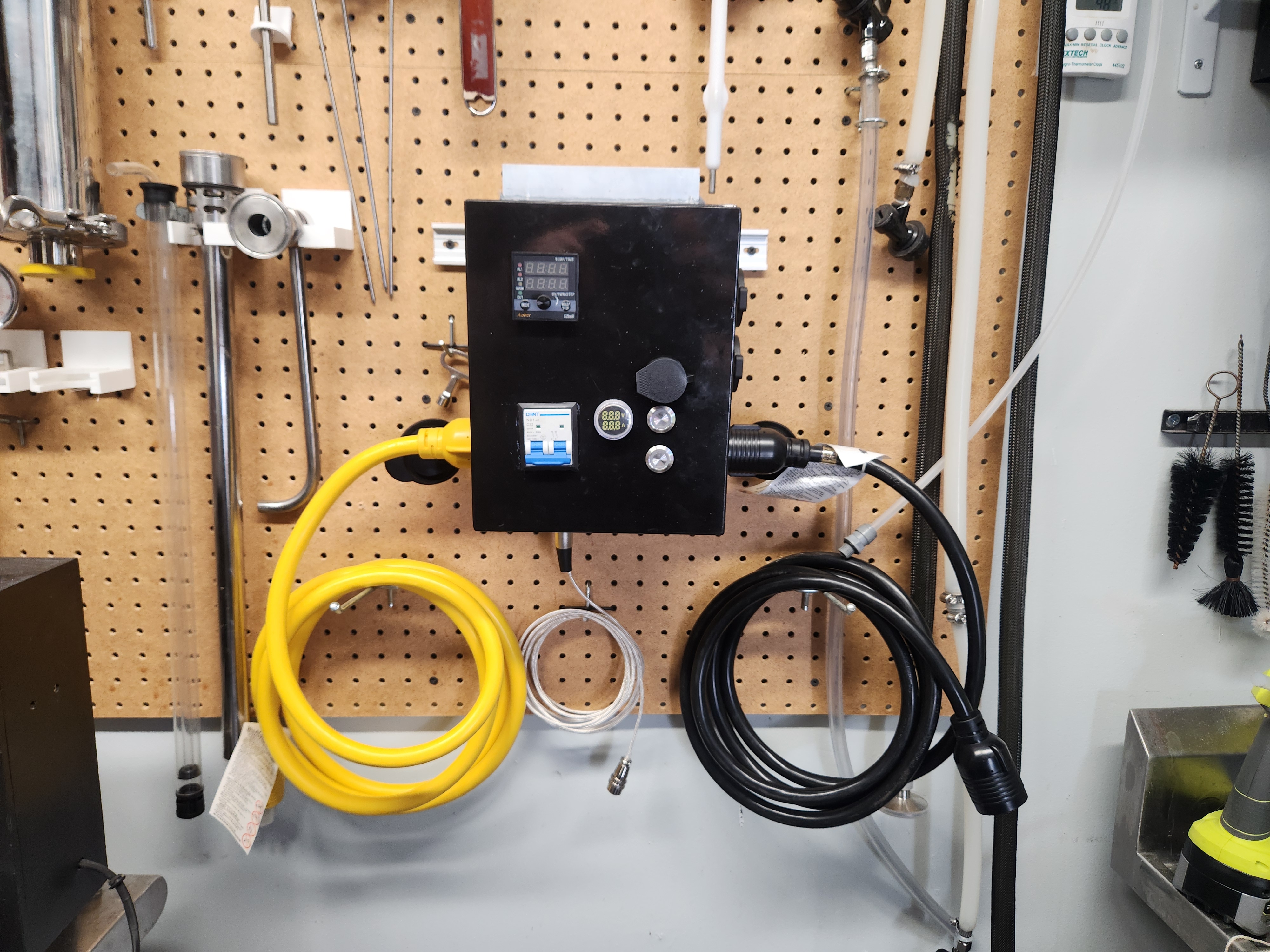
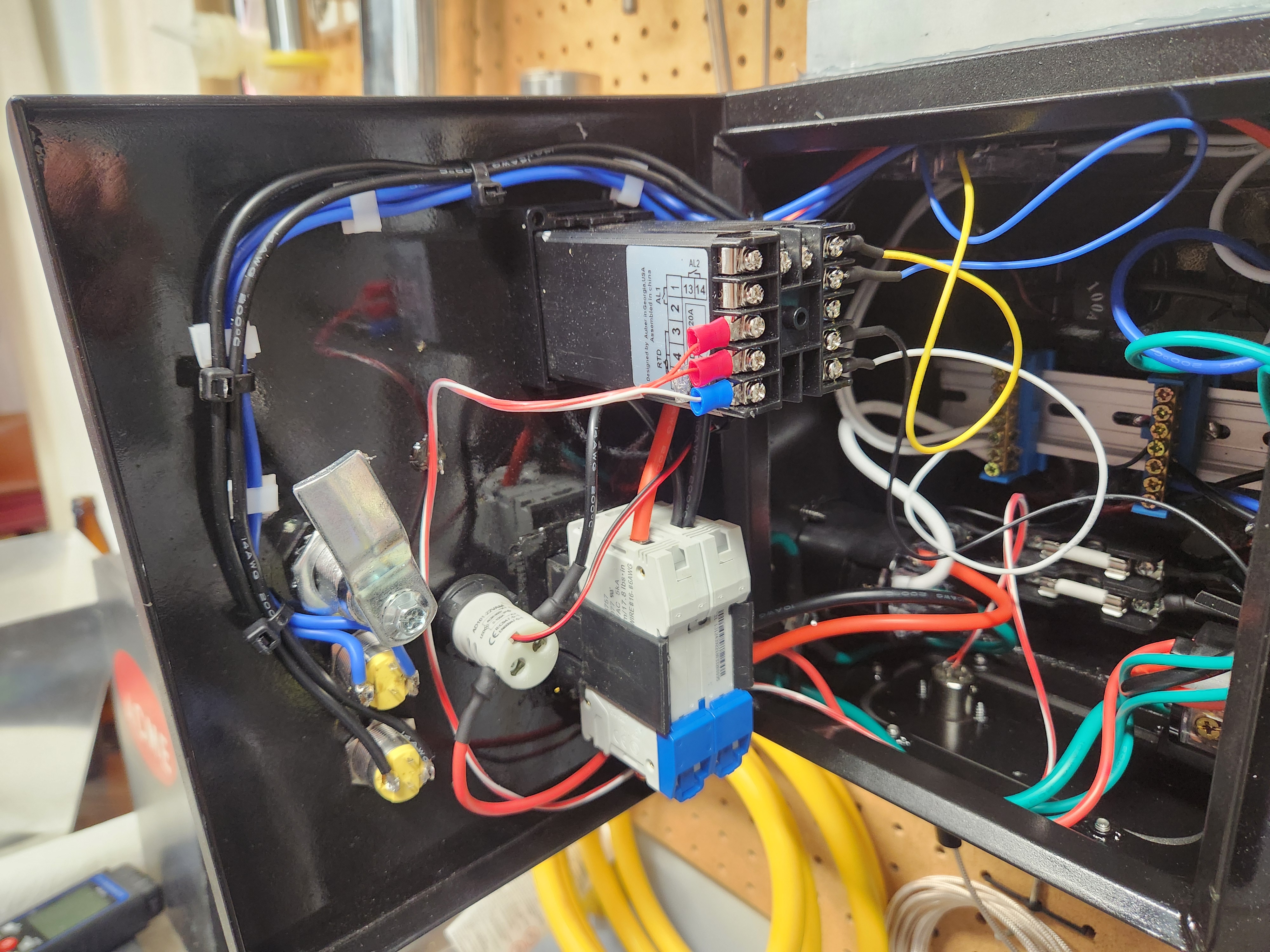
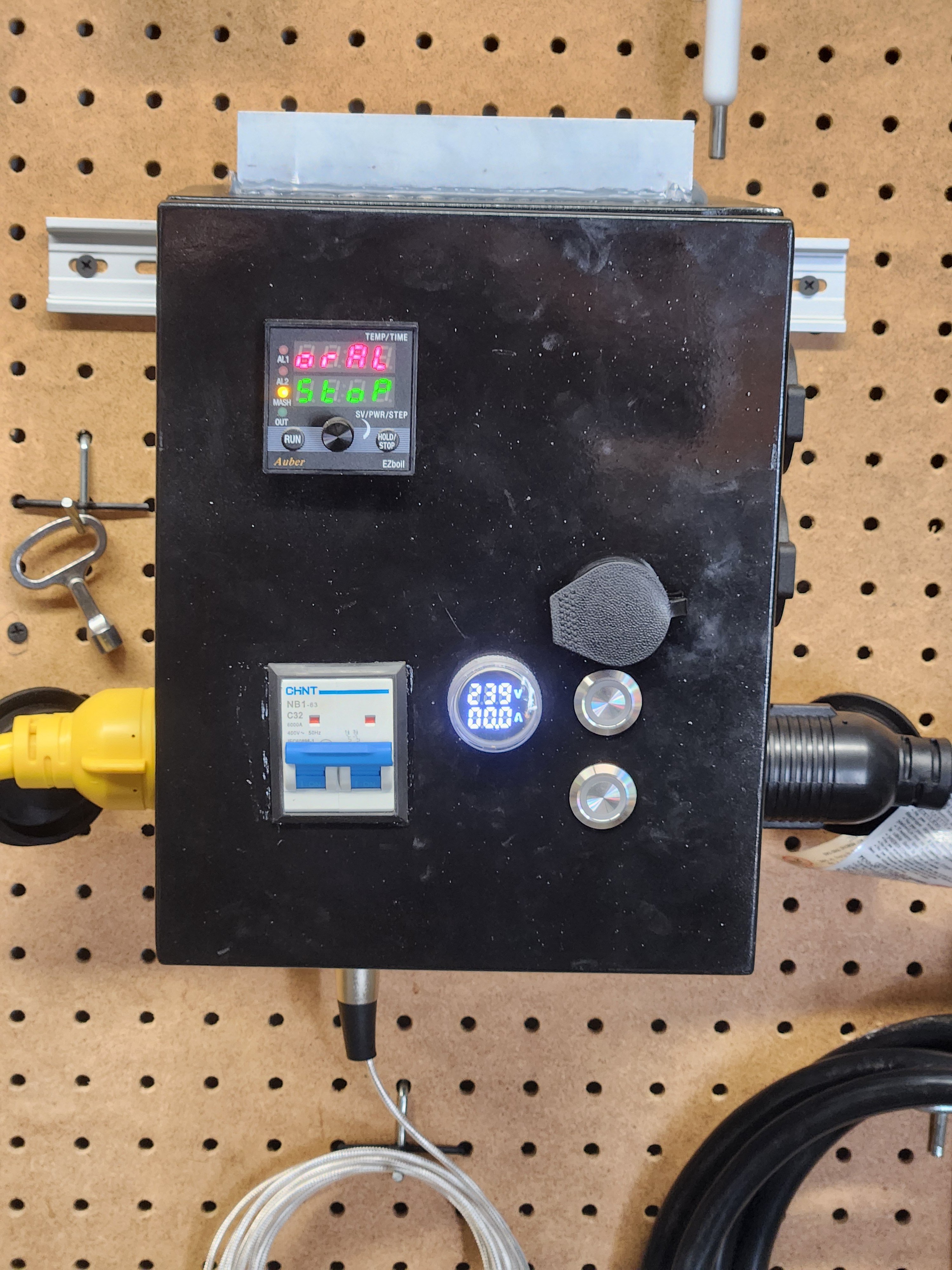
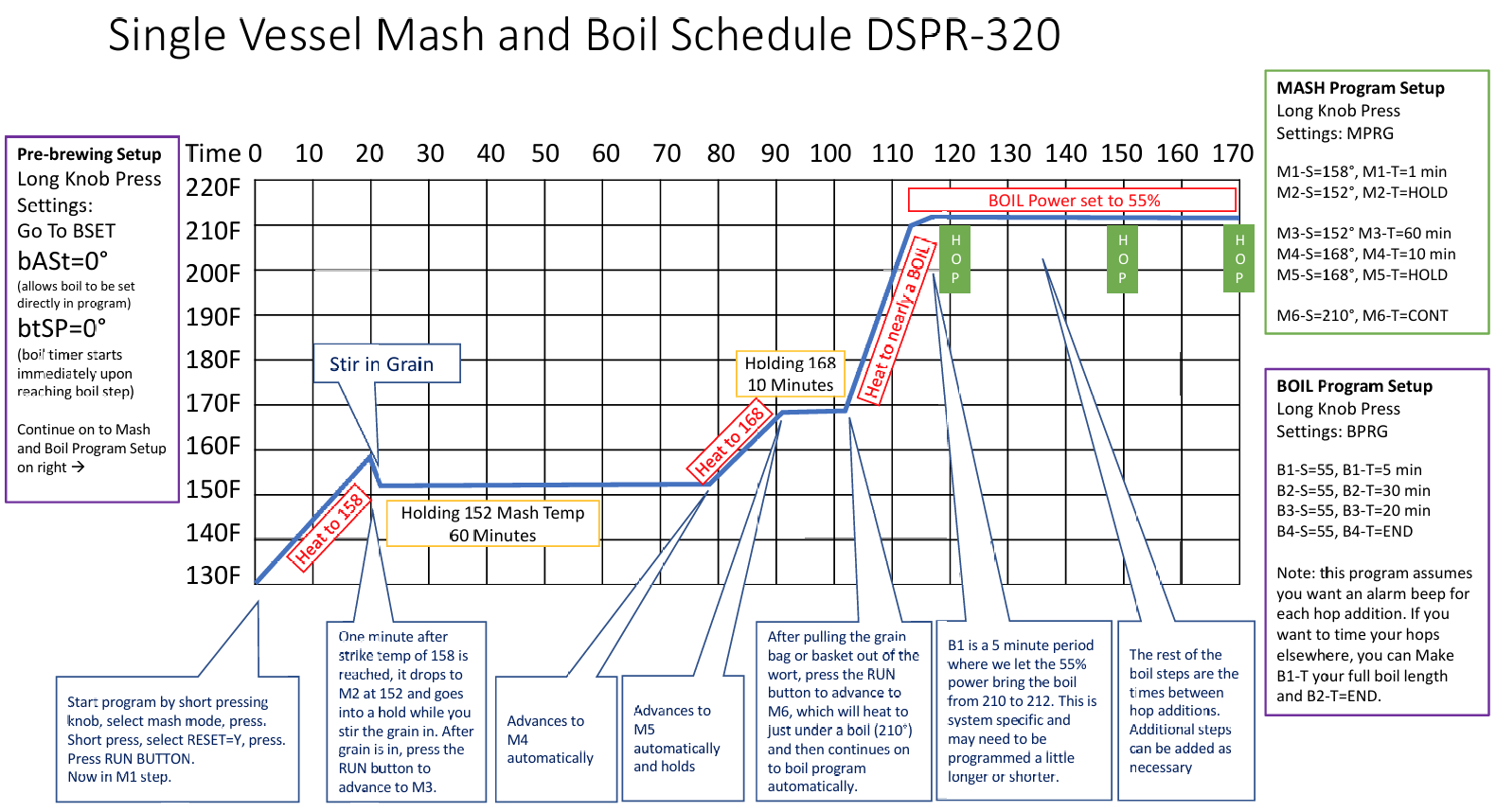
Do you have an SSR in there?View attachment 878576
View attachment 878577
View attachment 878578
Thanks for all the help getting this project going. I have a little bit of wire management due for the wires running to the controller but otherwise it is all done.
Still have to learn how to use the controller but I was able to get my kettle boiling.
Yup, it is attached to the heat sink.Do you have an SSR in there?
I do full volume mashing which makes high gravity beers fairly difficult (read: low efficiency) unless I dial down to less than 5 gallons of wort into the fermentor.My experience with the DSPR-320 has been mixed, with normal gravity brews it does fine, but almost every big brew 1.10 and higher I end up scorching the wort and ruining my heating element (not really ruined but it is covered in baked on black char). I bought a SYL-2352 a while ago as that is what i used on my three vessel system. I install it last week, it allows you to set not only temp but duty cycle, whereas the DSRP-320 only allows you to set temp (mash mode) or duty cycle (boil mode) but not both at the same time.
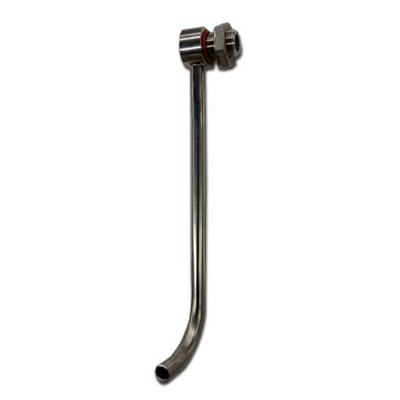
My experience with the DSPR-320 has been mixed, with normal gravity brews it does fine, but almost every big brew 1.10 and higher I end up scorching the wort and ruining my heating element (not really ruined but it is covered in baked on black char). I bought a SYL-2352 a while ago as that is what i used on my three vessel system. I install it last week, it allows you to set not only temp but duty cycle, whereas the DSRP-320 only allows you to set temp (mash mode) or duty cycle (boil mode) but not both at the same time.

I have only scorched wort during boil with fairly high starting gravities (1.07 and above). As I mentioned I believe it is due to the DSPR's inability to set a duty cycle and temp. You can set temp in mash mash mode or duty cycle in boil mode but not both. So in mash mode if I set my temp to 207 it is going go 100% until it hits 207, then shut off and repeat each time it goes below 207. In boil mode it will try to reach 212 at whatever duty cycle you set. If you are not at sea level (or boil pure water) then it basically applies full power trying to reach 212 (I have not found a setting to adjust the boil temp below 212 or whatever Auber says boil temp is). This is my experience with the DSPR unit, whereas the SYL-2352 is fully configurable and I have never scorched a heating element with that controller (I have blown them up by running them dry but that is a story for another timeI do full volume mashing which makes high gravity beers fairly difficult (read: low efficiency) unless I dial down to less than 5 gallons of wort into the fermentor.
When you scorched your wort was it less than full volume? I set my system up for BIAB with a false bottom and have an instrument tee with the temp sensor picking up from the bottom of the vessel and I have to constantly recirculate to make sure that the temperature that is read is representative of the liquid in the vessel.
My current problem is that for recirculation all I have right now is a tangential inlet and need to find a solution to recirculate near the top of the mash. Gonna have to spend some time on Bobby's site for a bit I think.
This is what I'm using right now. I guess I could just hack it down a bit and then get something else for whirlpool.
View attachment 878655
I have only scorched wort during boil with fairly high starting gravities (1.07 and above). As I mentioned I believe it is due to the DSPR's inability to set a duty cycle and temp. You can set temp in mash mash mode or duty cycle in boil mode but not both. So in mash mode if I set my temp to 207 it is going go 100% until it hits 207, then shut off and repeat each time it goes below 207. In boil mode it will try to reach 212 at whatever duty cycle you set. If you are not at sea level (or boil pure water) then it basically applies full power trying to reach 212 (I have not found a setting to adjust the boil temp below 212 or whatever Auber says boil temp is). This is my experience with the DSPR unit, whereas the SYL-2352 is fully configurable and I have never scorched a heating element with that controller (I have blown them up by running them dry but that is a story for another time)
Bobby, how do I set the duty cycle then? I typically use the mash profile for boiling since it allows me to set a specific temp whereas in boil mode I could never find somewhere to set the temp, it just seemed to run the controller up to some invisible preset temperature. Any additional info would be great.As Doug mentioned, the 320 has the mOUT parameter which is the highest duty cycle you want to allow when heating in mash mode (so it's untrue that it doesn't allow both at the same time). If you like the SYL, that's great but I don't want anyone to read that the 320 can't do it.
There is the caveat that you can't set a different mOUT per mash step on the schedule as it's a universal setting for the whole mash but if you want to limite your element's power to say 50% for all mash heating, that will do it fine.
how do I set the duty cycle then?
I typically use the mash profile for boiling since it allows me to set a specific temp whereas in boil mode I could never find somewhere to set the temp, it just seemed to run the controller up to some invisible preset temperature.

Bobby, how do I set the duty cycle then? I typically use the mash profile for boiling since it allows me to set a specific temp whereas in boil mode I could never find somewhere to set the temp, it just seemed to run the controller up to some invisible preset temperature. Any additional info would be great.
I don't understand the question exactly or maybe we're using different terminology. When you're mashing, you set a target temperature. It will generally ramp up the power to 100% if the temp delta between the current temp (PV) is far away from set temp (SV) to get there faster and then reduce the duty cycle as it approaches the target so as not to overshoot. IF you prefer that it doesn't run 100% output during those large delta ramp ups, you program the mOUT parameter to some percent lower than 100% (it means MAXIMUM OUTPUT). It will heat slower obviously, but it sounds like you want it to heat slower to keep the surface of the element from getting too hot. Maybe the element is too power dense.
Boil mode, as indicated by a "P" followed by a 0-100 power numeric doesn't care about temperature. It it just pulses the output at a given duty cycle like turning the knob on a gas stove. That's how you typically control boil, not by a temperature.
In summary, in mash mode you set a target temp and if you want the element to "make less average power" you knee cap it with the mOUT paramenter.
In boil mode, you set the power and the temperature rises until you reach your elevation's boil temperature.
Maybe the best way to approach this is to list out you desired brew day process and what you want the system to do to achieve it (without using controller/PID terms)
the way that PID based controllers modulate output is by pulsing the current flow (what you are calling duty cycle). If mOUT is set to 50%, it effectively turns your 6500 watt element into a 3750watt element (in MASH/TEMP mode) no matter how big the temperature delta is between the set point and current temperature.Bobby, I appreciate your feedback. I guess I missed that the mOUT can use a duty cycle.
My comment about the bOUT is still correct I believe. The DSPR does not allow you to set a boil temp I assume it is hard coded in @ 212, which for my area is not correct so when I run the boil program, I get full power all the time.
You might be correct on my heating element; I have been using a 6500W which could be the root cause of my problem. I swapped out my DSPR to an AYS type as I had great success with that one when I was running a 3-vessel system.
Appreciate the info. I will look at the bAST value that I am using.the way that PID based controllers modulate output is by pulsing the current flow (what you are calling duty cycle). If mOUT is set to 50%, it effectively turns your 6500 watt element into a 3750watt element (in MASH/TEMP mode) no matter how big the temperature delta is between the set point and current temperature.
You keep mentioning "setting a boil temperature" but that phrase doesn't make any sense. There is no such concept of setting a boil temperature and Doug explained that very clearly. Liquid boils at whatever temperature it boils at given your elevation above sea level and the ambient air pressure. It's not coded to stop heating at 212, that's just how hot the liquid can get because of physics. No controller made by any company would have a concept of setting a boil temperature.
After thinking about it a little more, If what you're trying to say is that the DSPR was not obeying the P-value in boiling mode, the issue you were having was due to leaving the bAST at some value other than zero.
For example, if you have bAST temp set to 212 then it will put out FULL POWER until that bAST temperature is achieved. bAST is a unique feature to Auber DSPR controllers so very few people understand it and it makes the controller frustrating. If you turn bAST to zero, the boil mode reacts intuitively, such as pulsing the boil at 50% when you set the boil control to P050.
It makes sense that the SYL module was doing more of what you expected in that case because it doesn't use the concept of boil acceleration (bAST)... Seriously though, if you switch back to the DSPR and learn how to use it, it's vastly superior to the SYL modules.
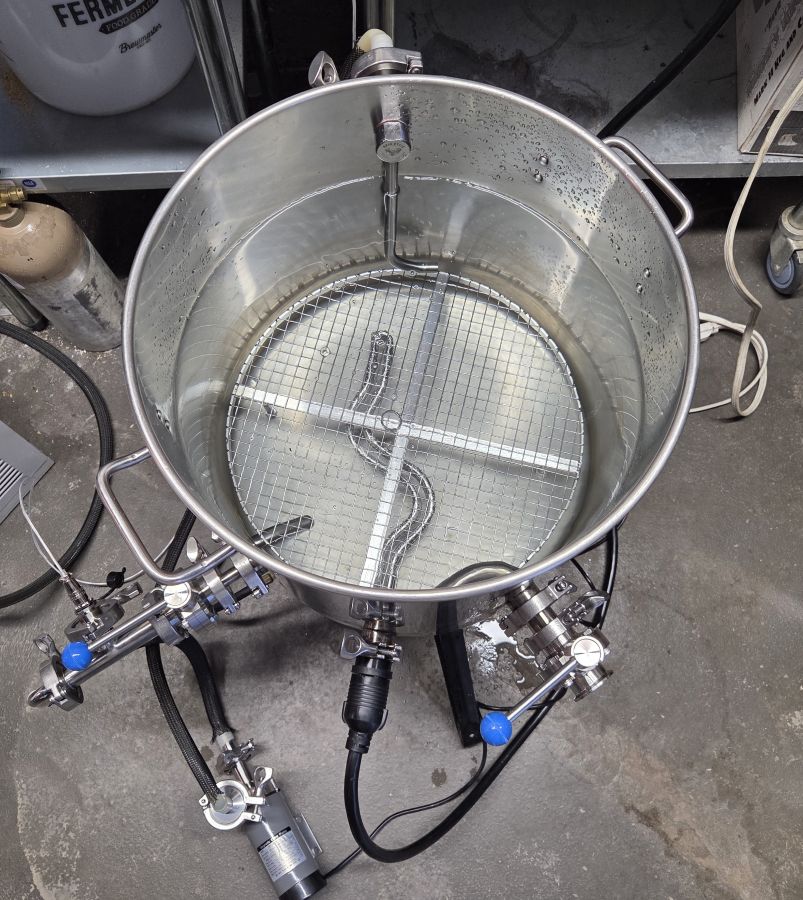
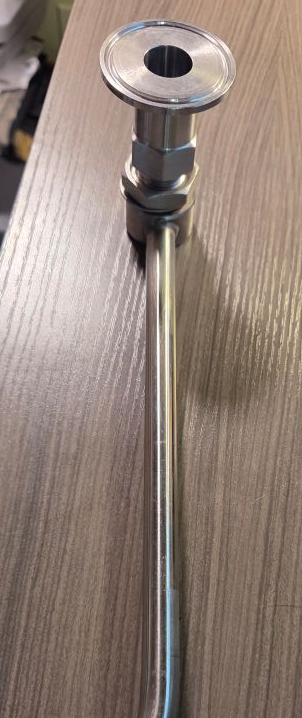
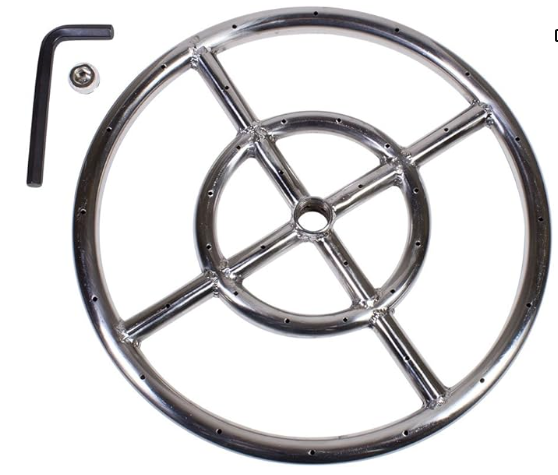
As awesome as that Spincycle may be; Lose it and cut out a larger hole for a 1.5"TC port (https://www.brewhardware.com/product_p/tc15wlf.htm) that you could attach a steam-condenserLove the primers here for the Auber controllers. This would have taken me a lot of trial and error to figure out without the knowledge being shared.
In regards to my build, I am putting the final touches and am not entirely sure what to do about the return.
First, a photo:
View attachment 879748
Since the temperature sensor is external and fed through the pickup tube I have to constantly recirculate to keep the temp data up to date. I plan on returning it through the high-mounted spin cycle. My issue is that it dips all the way down to the false bottom, so I'm going to have to cut it down. To replace the whirlpool function I am going to return the wort through the pickup tube at 4:30.
As much as I don't want to cut down the spin cycle, I can't really think of another good return method that doesn't end up stratifying the mash. I'm running a water test right now to make sure the program works.
View attachment 879753
What isn't pictured is my three-way valve that will switch between recirculation and whirlpool. I'll need to get another set of hose barb to TC connectors as I didn't plan for that initially and so I just included a butterfly valve so I can switch it for the test without losing a bunch of water.

I had to do some reading on split recirculation. Absent any experience with it myself, do you think that there is a benefit when doing full volume mashes in a bag? Most of what I saw were folks with AIO equipped with malt pipes.As awesome as that Spincycle may be; Lose it and cut out a larger hole for a 1.5"TC port (https://www.brewhardware.com/product_p/tc15wlf.htm) that you could attach a steam-condenserto and maybe the upper half of your recirc (https://www.brewhardware.com/product_p/tc15f12nptdouble.htm)....Split your recirculation between the top and the other port below the FB.
Just what I'd do.
EDIT: Sorry! Brain not working this morning; just posted that and remembered the port will be covered with a brew bag, but hey: Steam condenser for later!, and you should split your recirc anyway.
Dang it! Another EDIT: I should have included Bobby's 'Dang it' as an option:
https://www.brewhardware.com/SearchResults.asp?Search=dang+it&Submit=
